Published!: Loom by Matthew Turner
An illustrated novella of psychotic architectures… BUY NOW

At the collaborative intersection of image, text, artists' books, and archive
An illustrated novella of psychotic architectures… BUY NOW

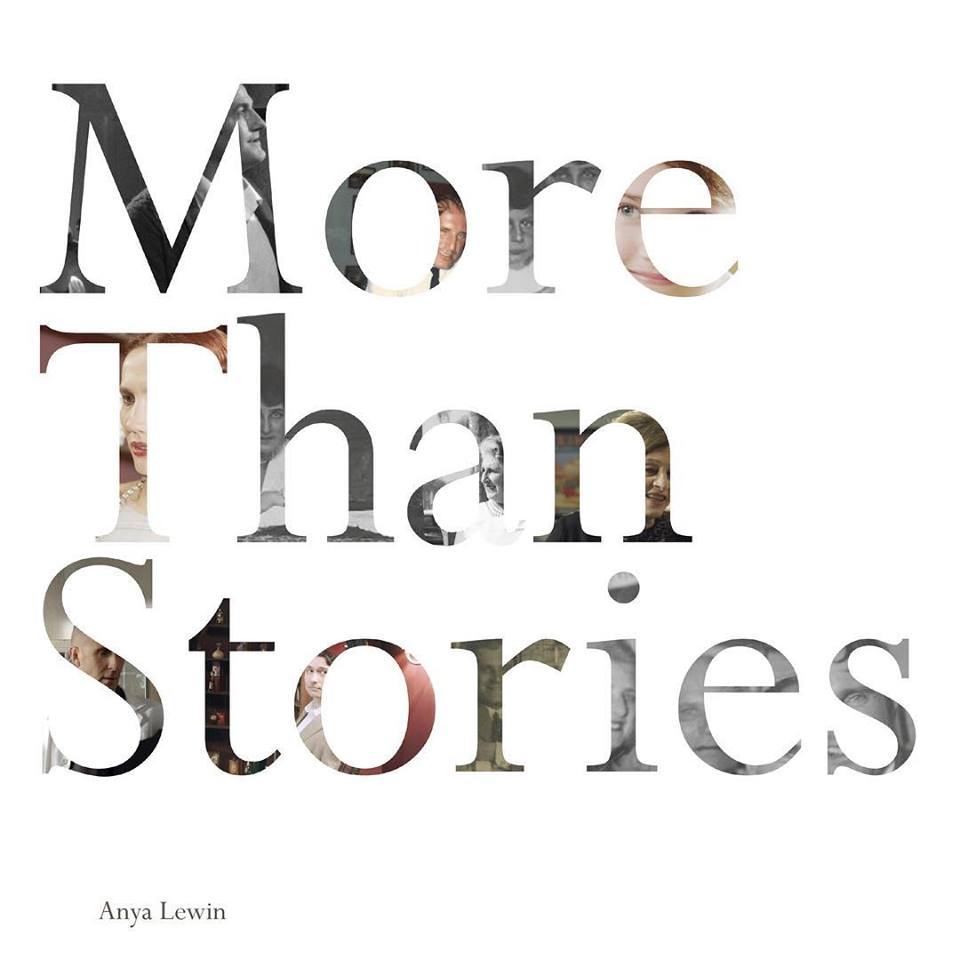
We are very happy to be publishing Anya Lewin’s photo-text book, More Than Stories. The book examines the archive materials — photographs, newspaper clippings and other ephemera — from the research processes that culminated in her film trilogy With Heartfelt Gratitude for the Painless Treatment (2008), Chez Paulette on the Sunset Strip (2013), and Fez: The Royal Scent (2019).
Together with film and production stills, excerpts from the films’ screenplays, and Anya’s introductory text, the book interweaves the haunted memories of Jewish life embedded in her family stories, wandering through the cities that her father inhabited: Cairo, Berlin, and Los Angeles.
The launch of the book will coincide with an exhibition of all three films at the John Hansard Gallery in Southampton in February 2019, and will be available from their bookshop for the durarion of the exhibition, and is available now to buy from our website.
UK orders (£10 + £2.14 postage)
![]()
Europe orders (£10 + £5.40 postage)
![]()
Rest of World orders (£10 + £8.00 postage)
![]()
Three films, three places… Penny Whitworth writes about her film making process, and her Gordian projects bookwork.
Much of my work concerns the exploration of spaces, architectures, and constructions, particularly those on the edge of conventional public areas and those whose use has been abandoned or transformed. Through my process I consider how we are affected and controlled by the environments we inhabit.
 Stills from Three Films, Penny Whitworth, 2017
Stills from Three Films, Penny Whitworth, 2017
The places that I initially explored for this series of works—a defunct water tower, an industrial complex of gas facilities, and a long out of use cable car winch—each have particular designs and purposes that contrast with the pedestrian nature of the areas that surround them. Despite this, they are largely overlooked by the people who pass by them on a daily basis. Once they are engaged with and thought about, their presence, past and present, is illuminated. Historical and contemporary speculations intertwine as I interpret and begin to take ownership of these places, merging my existence with the sites through which I pass.
‘The pasts … swirl around any explorer of ordinary landscape…. [T]he built environment is a sort of palimpsest, a document in which one layer of writing has been scraped off, and another one applied. An acute, mindful explorer who holds up the palimpsest to the light sees something of the earlier message, and a careful, confident explorer of the built environment soon sees all sorts of traces of past generations … simply because objects and even landscapes from the past have shaped their lives and shape them still.’ John R. Stilgoe, Outside Lies Magic: Regaining History and Awareness in Everyday Places, 1998



Stills from Three Films, Penny Whitworth, 2017
The original films highlight the dynamism and confusion of detail that arises from the combined processes, drawing the viewer into the various aspects of each place in a frenetic editing that echoes the distracted way we move through edgeland spaces. Transferring Three Films into book works allowed me explore the slower and more contemplative elements that develop when they are viewed as still images. New details appear and a sense of the spaces themselves—rather than our movement through them—begins to emerge.
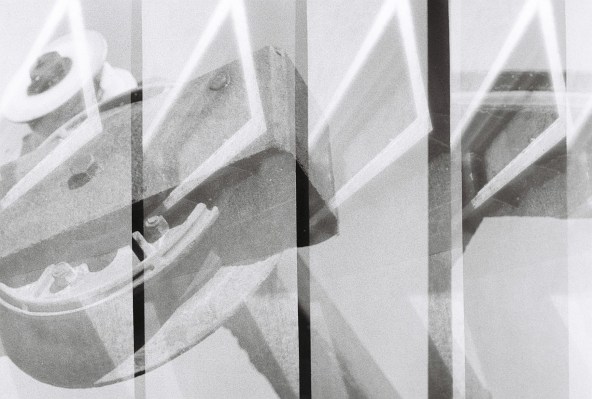
Stills from Three Films, Penny Whitworth, 2017
Each of the spaces in Three Films was first shot with a 35mm stills camera—a Pentax P30 or ME Super—the stills film was then put through a Lomokino cine camera, a small, hand-operated movie camera. The resultant imagery, full of shifts in focus, varying orientations, competing frames and a wealth of detail, have always been considered as both still and moving artworks, with neither taking precedence over the other. This tension gives the work an on-going sense of ambiguity and allows the modes of production to produce the modes of looking.

Each video piece from Three Films (Siward’s Way, Gasworks and Scarborough) can be viewed at penelopewhitworth.com and the bookwork can be ordered via the PayPal links below:
UK orders (£20.00 + £2.90 postage)
![]()
Europe orders (£20.00 + £5.80 postage)
![]()
Rest of World orders (£20.00 + £8 postage)
![]()
The artist, writer, and curator Azadeh Fatehrad writes about the research behind her Gordian Projects publication, Ornament of Damage

How can one translate the moment of encounter with an image? How does lost data affect upon our imagination? How can one trace the memory of an actual event through fragmented material?
For the past few years my practice has involved archival found images. My process begins with a visit to a museum or private collection to access material for my research. The site visit turns into a form of residency with the outcome being a reflection on the material and the archive—artistically, historically and analytically.
My method is two-staged: primary (selection) and secondary (digitalisation).
Choosing the images is instinctual. Images either speak to me or not. I might feel they have a story to tell, or at least make me curious to know more. I start with a large number of images and gradually, intuitively, reduce the selection.
Then, I digitise the images, (assuming they have not already been digitised by the museum or collection involved), so that I might take them away with me and continue to work with them. As is the case with scanning processes, there is an element of error producing failed scans. Sometimes part of the scan might be successful, with the other sections incomplete or lost. Archivists refer to these images as ‘false images’.
These distorted images are usually of no use to researchers, and yet I found myself becoming fascinated by their incompleteness. I looked at the new images, and although part of them were lost or destroyed, I could still remember the original images that I had seen. Through the failure of digitisation, the images kind of took on a new dimension and were transformed.
In ‘Ornaments of Damage’, through collaborating with the Gordian team, I have an opportunity to make these ‘false images’ visible to a wider audience. Through the addition of my reflexive ‘poem fragments’ the book gives new life to that which is normally discarded. The experience of making this book was poetic and spontaneous, and offered me a new way of reflecting on my encounters with archive.
You can buy Ornament of Damage here.
 White thorns, spinning sky,
White thorns, spinning sky,
each horizontal axis
sings the trinity.
One zenith, then another,
the crowns abide in the air.
Between the towns of Doncaster, Scunthorpe and Goole, less than 10 metres above sea level, 100 square miles of sparsely populated, predominantly agricultural land lie flat to the horizon. The low levels form the northern part of the Isle of Axholme, most of which belongs to North Lincolnshire, with outlying parcels in the East Riding and South Yorkshire. This reclaimed marshland is the setting of White Thorns, a sequence of poems that developed from several walks in 2016 and 2017.
The area is bounded on the east by the Trent, and on the north by the Ouse; at Blacktoft Sands, the confluence of the two rivers forms the Humber. In the 1620s, the Dutch engineer Cornelius Vermuyden was commissioned to drain the low-lying land of Hatfield Chase, a process that brought an end to the ‘islanding’ (or flooding) of Axholme, and also transformed much of the surrounding landscape. As part of the drainage project, Vermuyden re-routed the rivers Don and Idle, creating a new channel, the Dutch River, to the north, with a terminus at Goole. The Stainforth and Keadby canal, opened in 1802, links the Don in the west to the Trent in the east; its course through the isle runs parallel to the railway line, just below the villages of Ealand, Crowle and Keadby. A third parallel is provided by the M180, shadowing the railway and canal at a distance of a mile or so, and, with the M18 (linking Doncaster to Goole), effecting a contemporary ‘islanding’ of North Axholme to the south and west.
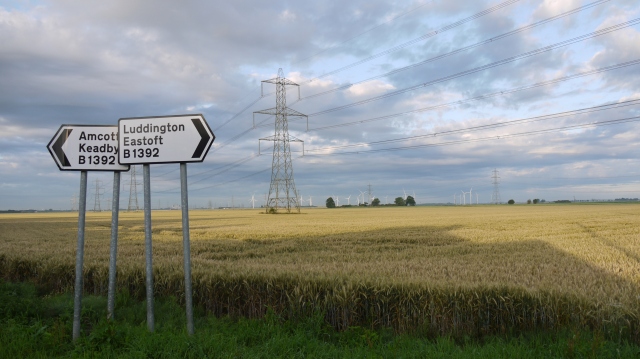 Since the middle ages, the area has been regarded as a source of fuel, with small-scale peat cutting on Thorne Moors preparing the ground for commercial extraction; by the 1980s, increasingly intensive methods had stripped large areas of the raised peat bog. A colliery – frequently troubled by flooding and faults, and mostly unproductive – also fissured the moors: the pithead was eventually demolished in 2014, and the resurfaced site is now home to a solar park. A few miles south, at Nun Moors, a 22-turbine wind farm stands at the edge of the Humberhead Peatlands National Nature Reserve. Six miles east, near Keadby, rising 90 metres from the flatlands, is a 34-turbine array; the largest onshore wind farm in England. It’s a dynamic illustration of how the exploration and extraction of energy continues to shape this landscape, the wheeling mesh of towers, hubs and blades visible throughout North Axholme, from arable field to depleted mire. It also invites us to consider the expansion of the grid laid down by Vermuyden, its field lines and drainage channels criss-crossed by the remnants of a light railway (serving passengers until 1933, and the peat works until 1963) and, latterly, the buried networks of utility cables and pipes, while, to the south and east, the skies are latticed with power-lines, the net thickening at Keadby, where, between the Warping Drain and the power station, the pylons and turbines seem to meet and interlace, white compasses turning through grey parallels.
Since the middle ages, the area has been regarded as a source of fuel, with small-scale peat cutting on Thorne Moors preparing the ground for commercial extraction; by the 1980s, increasingly intensive methods had stripped large areas of the raised peat bog. A colliery – frequently troubled by flooding and faults, and mostly unproductive – also fissured the moors: the pithead was eventually demolished in 2014, and the resurfaced site is now home to a solar park. A few miles south, at Nun Moors, a 22-turbine wind farm stands at the edge of the Humberhead Peatlands National Nature Reserve. Six miles east, near Keadby, rising 90 metres from the flatlands, is a 34-turbine array; the largest onshore wind farm in England. It’s a dynamic illustration of how the exploration and extraction of energy continues to shape this landscape, the wheeling mesh of towers, hubs and blades visible throughout North Axholme, from arable field to depleted mire. It also invites us to consider the expansion of the grid laid down by Vermuyden, its field lines and drainage channels criss-crossed by the remnants of a light railway (serving passengers until 1933, and the peat works until 1963) and, latterly, the buried networks of utility cables and pipes, while, to the south and east, the skies are latticed with power-lines, the net thickening at Keadby, where, between the Warping Drain and the power station, the pylons and turbines seem to meet and interlace, white compasses turning through grey parallels.
On high, a freehold
of six thousand square metres
threshed by a rotor.
All the feathering threefold
swept into pitch cylinders.
I entered this grid through another: OS Landranger Sheet 112, which I studied before starting out, a new edition, the blank squares filling up with clustered blades. The walks began in Ealand, shortly after dawn on 25 March 2016 (Good Friday), and ended in Thorne around 15 months later, the last of these being an anti-clockwise tour of North Axholme, from dusk until the following afternoon. These weren’t so much linear or circular journeys as transits of a square, or squares within squares, the line (of towpath, track, or minor road) almost always straight, the direction (reset at each corner of the isle) undivided. At certain points in the walks – an intersection of canal and bridge, a chain of pylons making a 90-degree turn – my head would fill with right angles, some imagined, some real, rising out of the flat terrain and my unfamiliarity with the landscape. All this was heightened by walking at night, the senses manufacturing events from scraps of sound (waterfowl in the soak drains, the faint hum of an electric current) and patches of available light (the moon in the water, a signalman’s lamp), and always the filigree of infrastructure, the pylons and turbines compressed to a single plane, the distance collapsed, become abstract, then suddenly present, almost measurable, perception sharpened and distorted by turns, the mind filling in the blanks.
There’s another kind of compression at work in the 68 poems of White Thorns: an isle-wide trek distilled into a series of five-line, thirty-one syllable units, each, perhaps, expanding into its own space, its own plot. There are other passages through this landscape, too, including that of the freight train bearing wood pellets from Louisiana to North Yorkshire (via the Humberhead Peatlands, which sits atop the blackened trunks of a Paleolithic forest, burned by the Romans), and its own story of exhaustion and recovery:
Slow burn, right to left,
twenty-four frames per second.
Twenty-four wagons
of biomass, bound for Drax,
a forest’s offcuts and husks.
 White Thorns is the second pamphlet by Brian Lewis (following East Wind, a sequence of lyrical essays and haiku, which appeared from Gordian Projects in 2015). It is published by Gordian Projects as a hand-stitched pamphlet with hand-stamped covers, and comes with an individual poem, presented in an envelope as an artist’s multiple.
White Thorns is the second pamphlet by Brian Lewis (following East Wind, a sequence of lyrical essays and haiku, which appeared from Gordian Projects in 2015). It is published by Gordian Projects as a hand-stitched pamphlet with hand-stamped covers, and comes with an individual poem, presented in an envelope as an artist’s multiple.
To order White Thorns, please click on the relevant PayPal link below:
UK orders (£5 + £0.90 postage)
![]()
Europe orders (£5 + £2.70 postage)
![]()
Rest of World orders (£5 + £3.30 postage)
![]()
Listen to Brian Lewis read 9 poems from ‘White Thorns’ on location at Keadby Wind Farm, 2 December 2017:
We are delighted to be launching three new titles at Small Publishers, Conway Hall, London, 10&11 November, together with a hosted reading as part of the events programme
Ornament of Damage, a photo-book with poems and essay by Azadeh Fatehrad is an exploration of Iranian photographic imagery from the archives in Frankfurt-Am-Main and Stockholm. During the process of digitisation, images became distorted, disrupted and altered, disfiguring and removing the subjects from view.
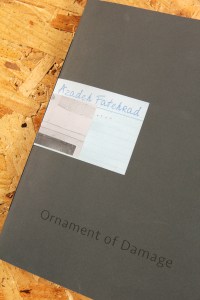

White Thorns by Brian Lewis is his second pamphlet exploring the infrastructure and landscape of the East Coast. Comprising sequences of verse, and an artists’ multiple, White Thorns builds on the work of East Wind, his first pamphlet for Gordian Projects.
Penny Whitworth‘s Three Films seeks to translate the abstract and formal elements of analogue films into book form. The structural aspects of the films have influenced the production of the books, resulting in three different book formats, presented together in a hand-made slip case.
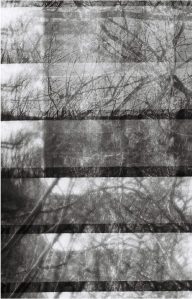


As part of the ASLE-UKI & Land2 Conference at Sheffield Institute of the Arts and Bank Street Arts, Gordian Projects will exhibit four publications that coincide with the conference’s themes of Cross, Multi, Inter, Trans collaborative practices that explore place, landscape and environment.
10,500 Miles, Kotryna Juskaite & Kim Lundgren
East Wind, Brian Lewis
Echoes from a Berlin Childhood, Helen Clarke
MilkyWayYouWillHearMeCall, Judit Bodor, Emma Bolland & Tom Rodgers
The conference runs from 6th to 28th September across two venues, Sheffield Institute of Arts and Bank Street Arts, and hosts a range of artists, poets, performers, curators and academics.
‘Look, it’s a long way… skewed postcards of a casual photography laying itself out like curling scraps on a tilted pin-board… look, it’s a long way…’
Gordian Projects are proud to announce the arrival of 10,500 Miles, a collaborative work between two artists, exploring photography and collage.
Kotryna Juskaite and Kim Lundgren, recent graduates of Leeds Beckett University, are both photographers and designers who are interested in the exploration of the world around them and how they can extend their studies through experimental collages and book design. We have been excited to work with two young artists who continuing to work and travel together and we look forward to seeing what comes next…
A handmade, open-spine book in full colour reproduction, 10,500 Miles is available for only £18 plus postage and packing.
10,500 Miles
UK orders (£18 + £1.80 postage)
![]()
Europe (£18 + £5.25 postage)
![]()
Rest of World (£18 + £7.50 postage)
![]()
We are thrilled to be part of the second Independent Publishers Book Fair in Sheffield on Saturday 10 June 2017
The participating presses include And Other Stories, Comma Press, Dodo Ink, enjoy your homes, Girasol Press, Gordian Projects, Little Island Press, Longbarrow Press, Rachael hand, Spirit Duplicator, The Poetry Business, and Tilted Axis Press. The fair will include handmade artists’ books, poetry, fiction, art writing, literary criticism, zines, and much more.
Performances and readings include the internationally known New York based experimental poets Karen Mac Cormack and Steve McCaffery. The whole day, including the performances and readings, is free!
Visit the book fair website for more details: http://independentbookfair.wordpress.com
Watch the video to meet the presses and performers.
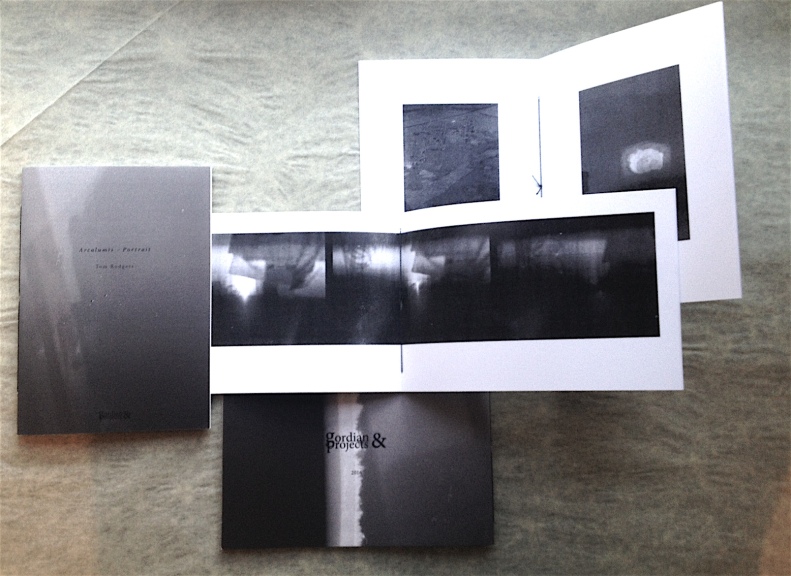
Between now and Christmas buy any one of our publications: Arcalumis by Tom Rodgers, East Wind by Brian Lewis, Echoes From A Berlin Childhood by Helen Clarke, Lectolalia by Emma Bolland, or the MilkyWayYouWillHearMeCall pamphlets by Judit Bodor, Emma Bolland, and Tom Rodgers, and receive a free copy of Place and Memory: an emotional exploration of ‘city’ by eight artists and writers.
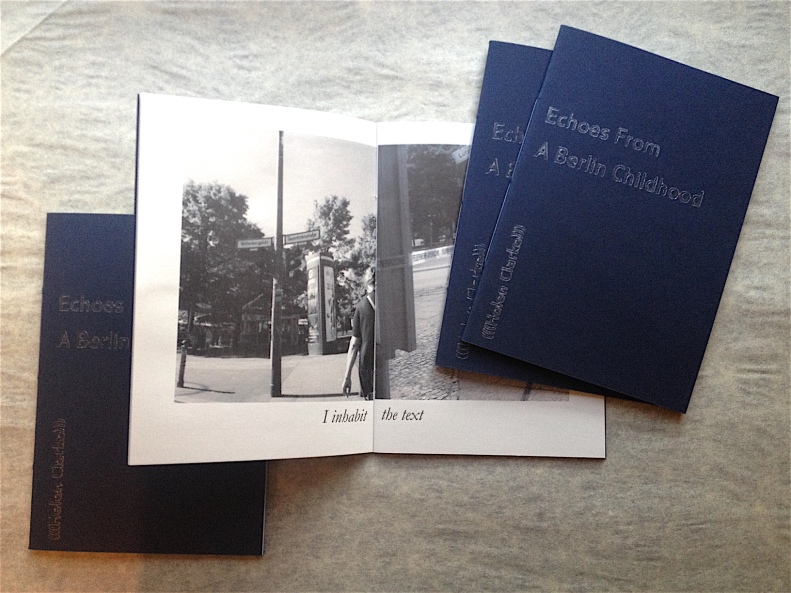
We are delighted that our two new photo/text publications, Arcalumis by Tom Rodgers, and Echoes From A Berlin Childhood by Helen Clarke, are now in national collections, including The V&A Art Library, The Saison Poetry Library at The Royal Festival Hall, The Winchester School of Art’s Handling Collection, and the Women’s Walking Library. This means that all of our publications are now in national public collections.

Brian Lewis has recorded excerpts from ‘The Wind Rose’, a lyric essay based on a walk from Withernsea to Hornsea, north along the Holderness cliffs. This selection begins with an account of the view from Tunstall, the former site of the UK’s most northerly meridian mark. ‘The Wind Rose’ (along with the related lyric essays ‘Half-winds’ and ‘The Compass Rose’) appears in the pamphlet East Wind. Listen below: